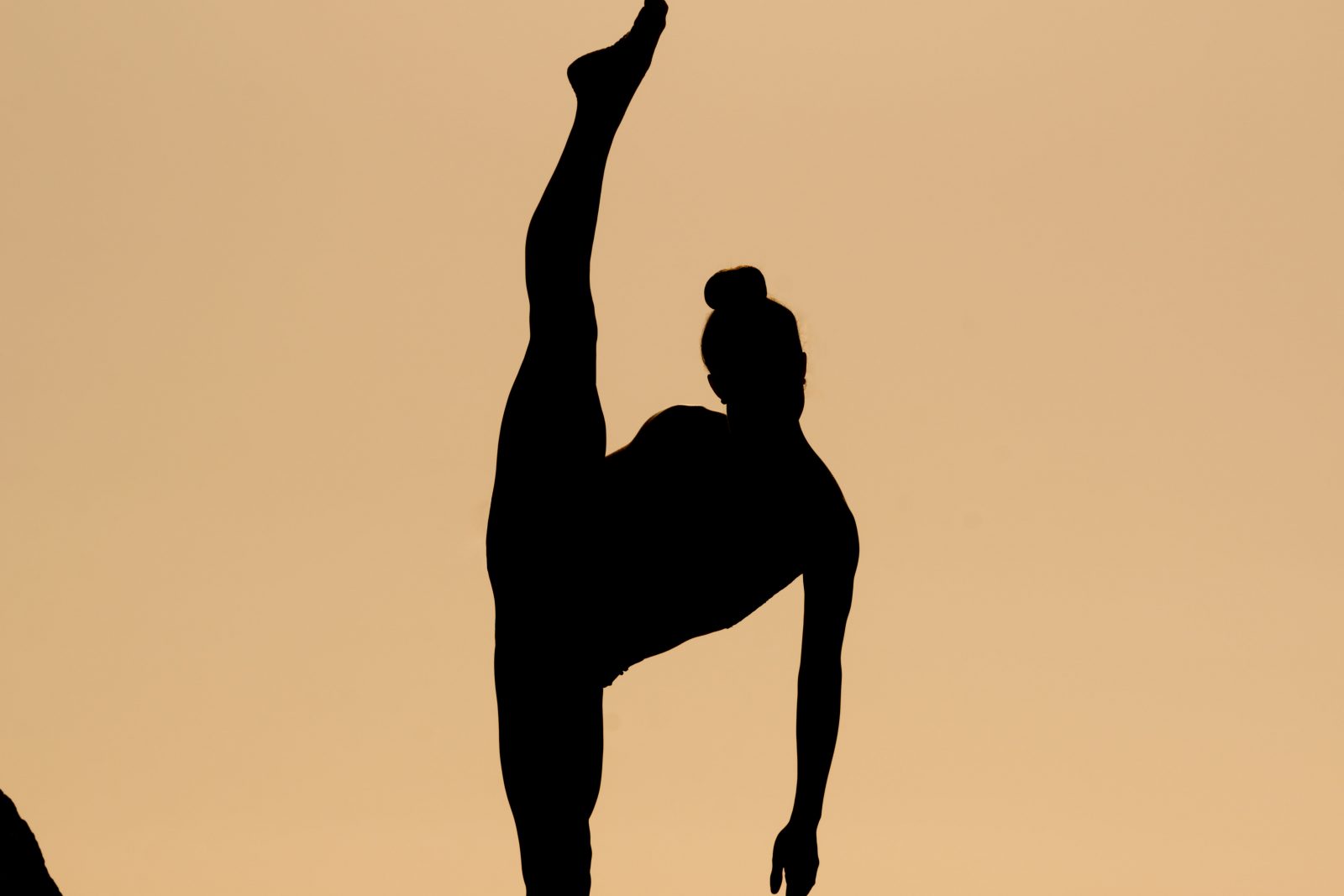This article was originally published in our Spring 2022 print issue.
Dancers spend their careers improving their flexibility. Flexible hamstrings (muscles at the back of the thigh) allow for beautiful lines and deeper splits. Traditionally, stretching has been used to improve hamstring flexibility. Stretching works and allows dancers to push past their comfort zones to achieve new ranges of motion in both joints and muscles. However, stretching can increase your risk for injury. Strength training is an often missed component of a dancer’s training and can be key for improved mobility and performance.
A balance between mobility and strength is crucial to achieving greater ranges of motion while minimizing risk of injury. Strengthening trains your muscles to be more resilient through a certain range of motion. It also increases your feelings of safety at your end ranges; it lets you trust end-range movements and experience better flexibility and control.
Train your hamstrings to be strong throughout their entire range of motion, including end-range hip flexion and knee extension. As you gain strength at the end ranges, you may notice that you can stretch more easily and go deeper, for example, in your front splits and forward folds.
Incorporate one to two of the following exercises into your training two to three days per week, allowing for rest days in between to let your muscles recover. Warm up with dynamic stretches like hip swings and hip hinges.
1. Romanian deadlift. Start by standing with your feet apart, knees slightly bent and a heavy weight resting between your feet. Hinge forward at your hips and keep your back long as you send your butt back while you bend down and pick up the weight. Then, stand up. If you can reach the weight easily, perform this exercise while standing on a step and position the weight below the step, on the floor. This allows you to get a deeper stretch and work at a greater range of motion. Perform three to four sets of eight to 10 repetitions, with a one- to two-minute rest between sets.
Progression: Perform the same exercise with straight knees.
2. Kickstand deadlifts. Same as the Romanian deadlift but perform on one leg, with your other foot resting lightly behind you. Feel this exercise in the hamstrings and glutes of your standing leg. Perform three to four sets of eight to 10 repetitions per leg with moderate weight.
Progression: Lift the back foot off the floor to perform single-leg deadlifts.
3. Bridge walkouts. Lying on your back with knees bent and feet flat on the floor, raise your buttocks off the floor. Hold this position while you walk your feet out and back slowly with control. Perform until fatigue, two to three sets.
Variation: With your heels pressing down onto a slider or paper plate, slide your feet out and back (straighten and bend your knees) while holding your bridge.
4. Slider front splits. Start in the kneeling position, then extend one leg out in front of you and press your heel down into a slider. While maintaining contact with the slider, slide your leg forward as far as you can go into your front split, and then return to the half-kneel position with control. If your split is far off the floor, use pillows or a yoga block to support your pelvis as you lower into your split. This allows you to feel safer and more in control of the movement.
Supported stretching
When you feel a lot of strain or tension with a deep stretch, it may be because your muscles are fighting against the stretch. Giving yourself support in a stretch can allow you to sink into a deeper stretch with ease and improve your tolerance for the stretch. You can use pillows, yoga blocks, resistance bands or straps to support yourself and allow your body to gain trust at a new range of motion.
If you’re feeling tingling, pins and needles, burning, pain or excess strain during stretching or any movements, seek help from a physiotherapist.
Dance Media Group strengthens the dance sector through dialogue. Can you help us sustain national, accessible dance coverage? Your contribution supports writers, illustrators, photographers and dancers as they tell their own stories. Dance Media Group is a charitable non-profit organization publishing The Dance Current in print and online.

Tagged:




